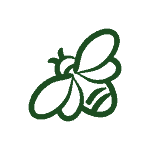
Even though we may occasionally call ourselves Beekeepers, bees are wild, all we do is provide a home for them and keep them healthy. In return harvest their honey.
We have a number of traditional wooden hives located in apiaries in our fields. The bees have access to flowers throughout the Bickington and Fremington area, so are truly local.

WHAT ARE THE BEES DOING NOW?
Honey bees do not hibernate and are active all year round, even in the winter! What they are doing each month can be dependent on many factors, for example, weather, temperature & health.
WHAT ARE THE BEES DOING BY MONTH? FIND OUT
In January, the bees are clustered together around the queen keeping warm by vibrating their wings.
They will keep the hive at a constant temperature, sometimes increasing the temperature to encourage the queen to start laying.
On warmer days, bees maybe seen leaving the hive to go to the toilet & to collect water to dilute their stores of honey.
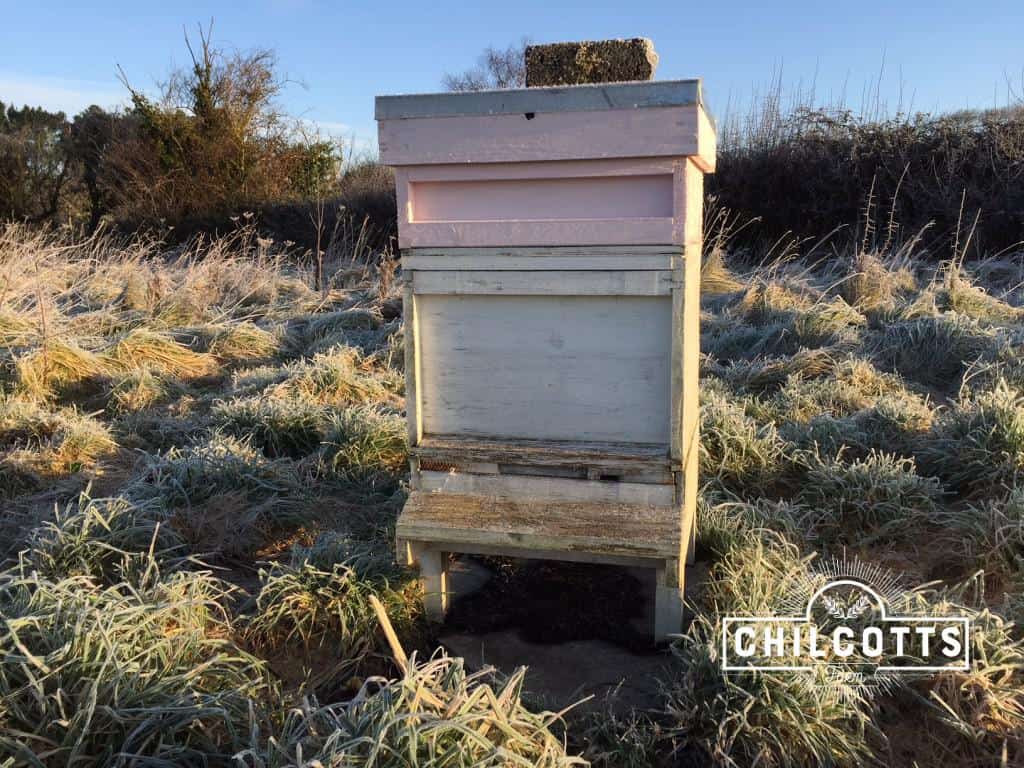
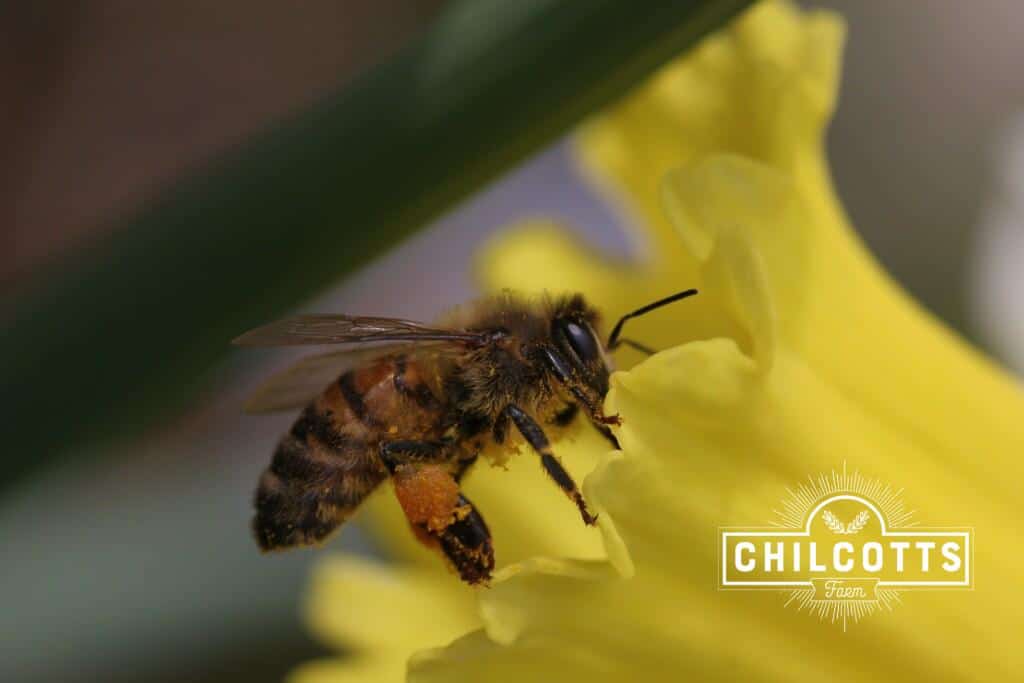
The bees are still clustered together in the hive, keeping warm. They will be clustered around the queen who has hopefully started laying.
In Devon at this time of year, we often see the bees leaving the hive on fine warmer days and returning with new pollen from early spring flowers.

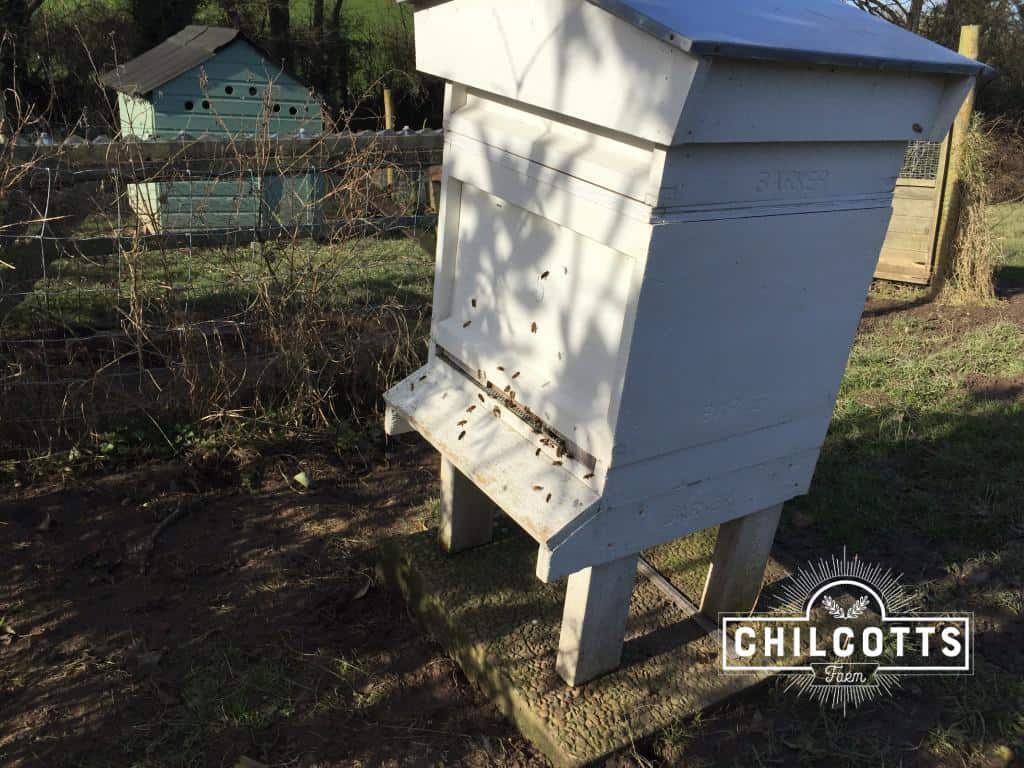
If the weather is fine and warm, there should be regular activity in the hive.
The bees will be leaving the hive to collect pollen and nectar.
The queen should be laying at a good rate, building up the size of the work force in preparation for the main pollen flow in spring and summer.
The bees will be consuming a lot of their stored honey, so we make sure they have enough stored food. If we think their stores are running low, we give them fondant or a light sugar syrup.

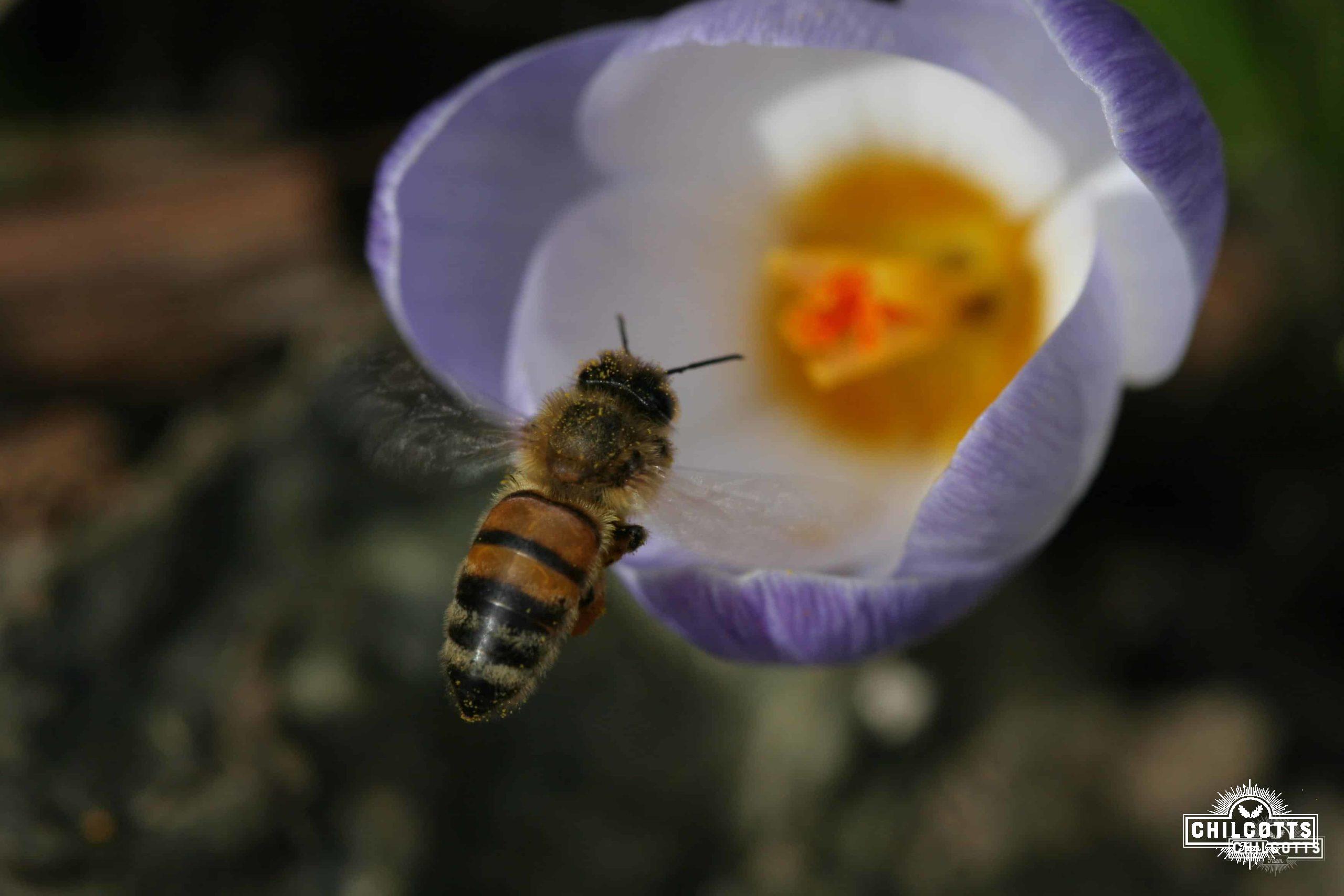
The eggs the queen has been laying since January will be hatching daily, so the colony should be growing nicely.
New bees will have started foraging and there should be a lot of bees bringing back bags of pollen on their legs and nectar in their bellies.
The queen will now be laying at full rate!
Look closely at the picture on the right and you can see the bags of yellow/orange pollen on the bees.
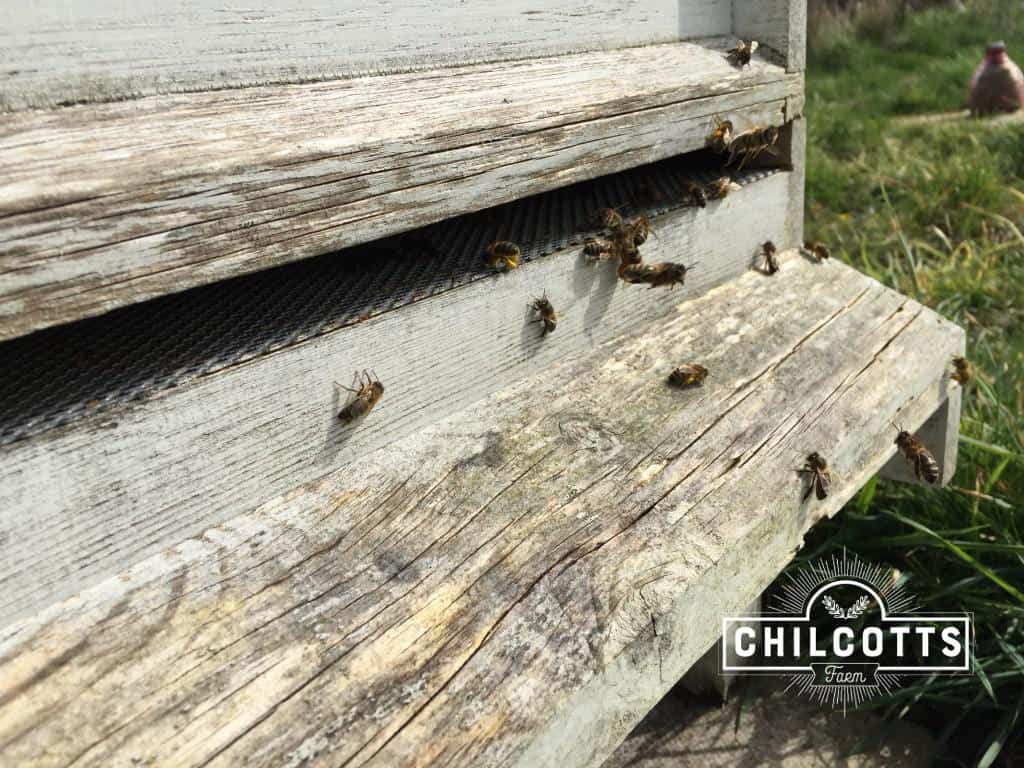
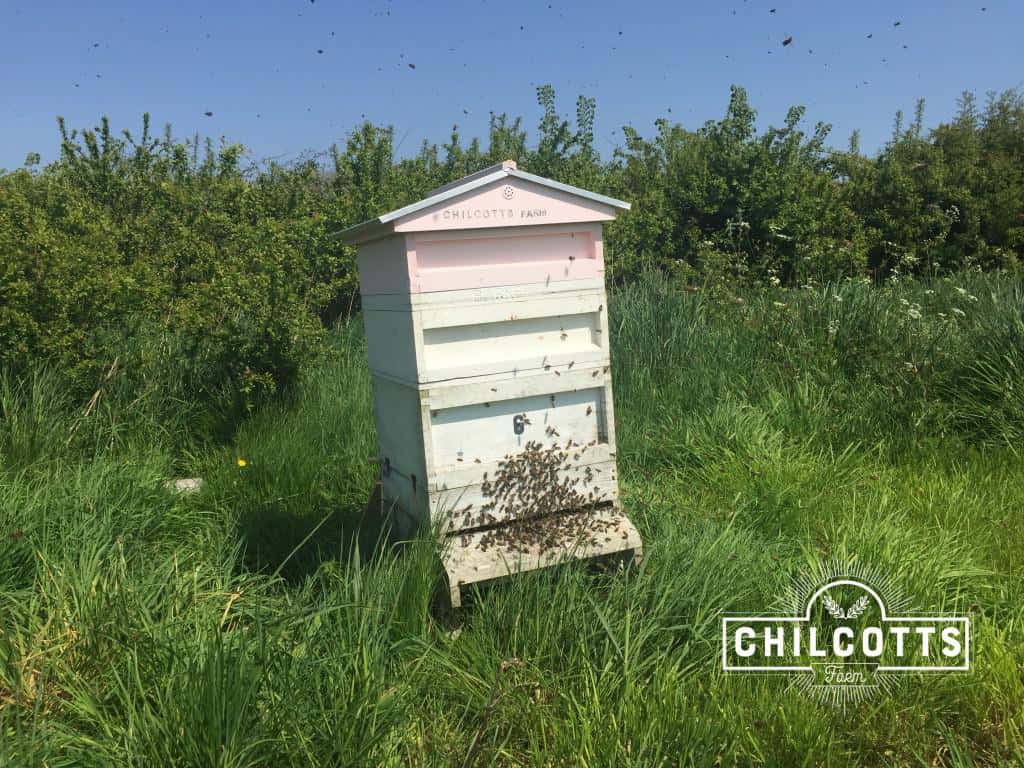
The bees will be gathering nectar from the spring flowers.
If the weather is good and the conditions are right this maybe turned into sufficient honey that can be harvested at the end of spring.
The queen bee is continuing to lay, but if the conditions are right the worker bees maybe making preparations to swarm. The picture on the left shows leaving a hive and flying off or swarming.
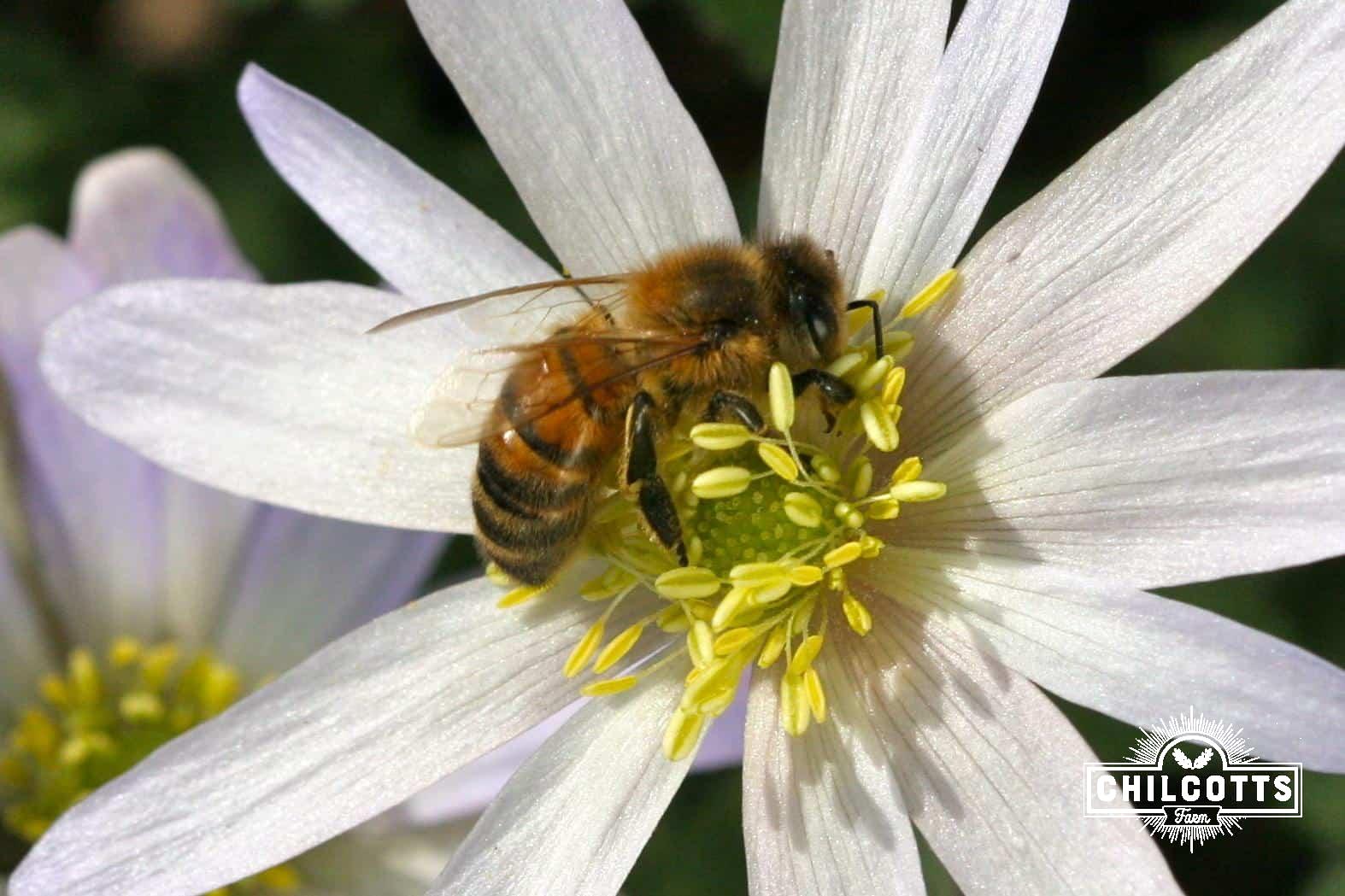
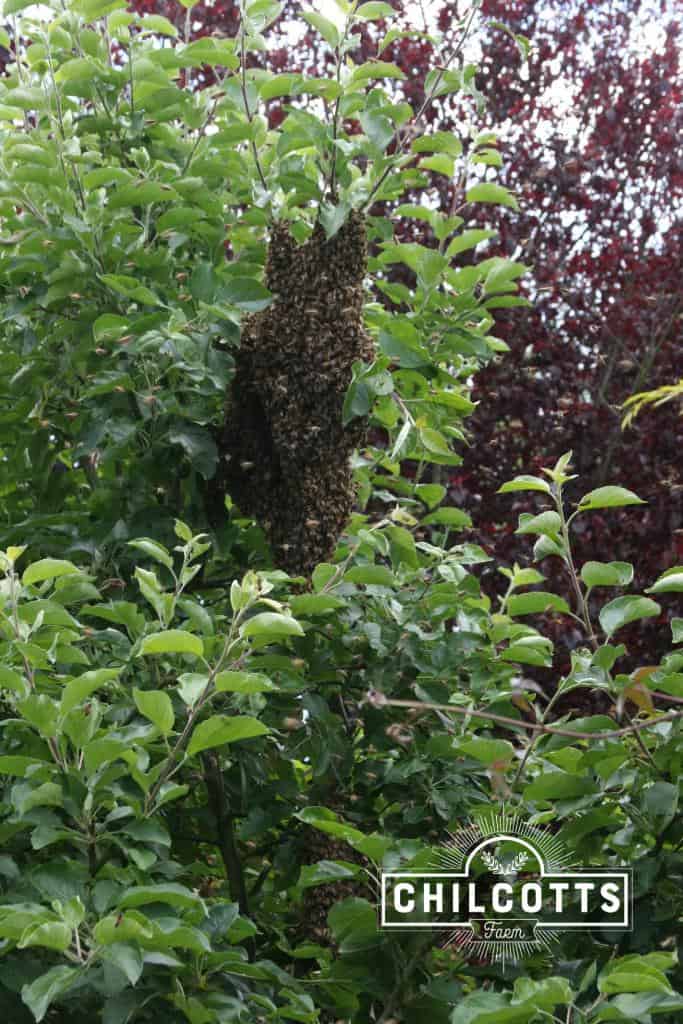
In June the spring blossom is coming to and end or may have finished. This gives the bees little to do. The bees often take advantage of this time and swarm. Swarming is a natural way for the bees to produce new colonies.
The worker bees will build a special cell within the nest called a queen cell. In here the existing queen will lay an egg. The worker bees will put royal jelly into this cell for the new queen to feed on before she hatches. When conditions are right, half the hive will take the existing queen, with half the honey stores and leave the hive to look for a new home. This is swarming.
Beekeepers can do many things to try and discourage swarming, or even do an artificial swarm themselves, but inevitably a healthy hive will look to swarm at some point.
The bees are very busy this month making the most of the good weather collecting the main summer nectar.
In the hive the bee population will still be growing as new bees hatch out. If the hive has not swarmed, the hive could be housing 60,000 bees.
The queen bee will start to reduce the number of eggs she is laying as the main need for a large workforce is now!
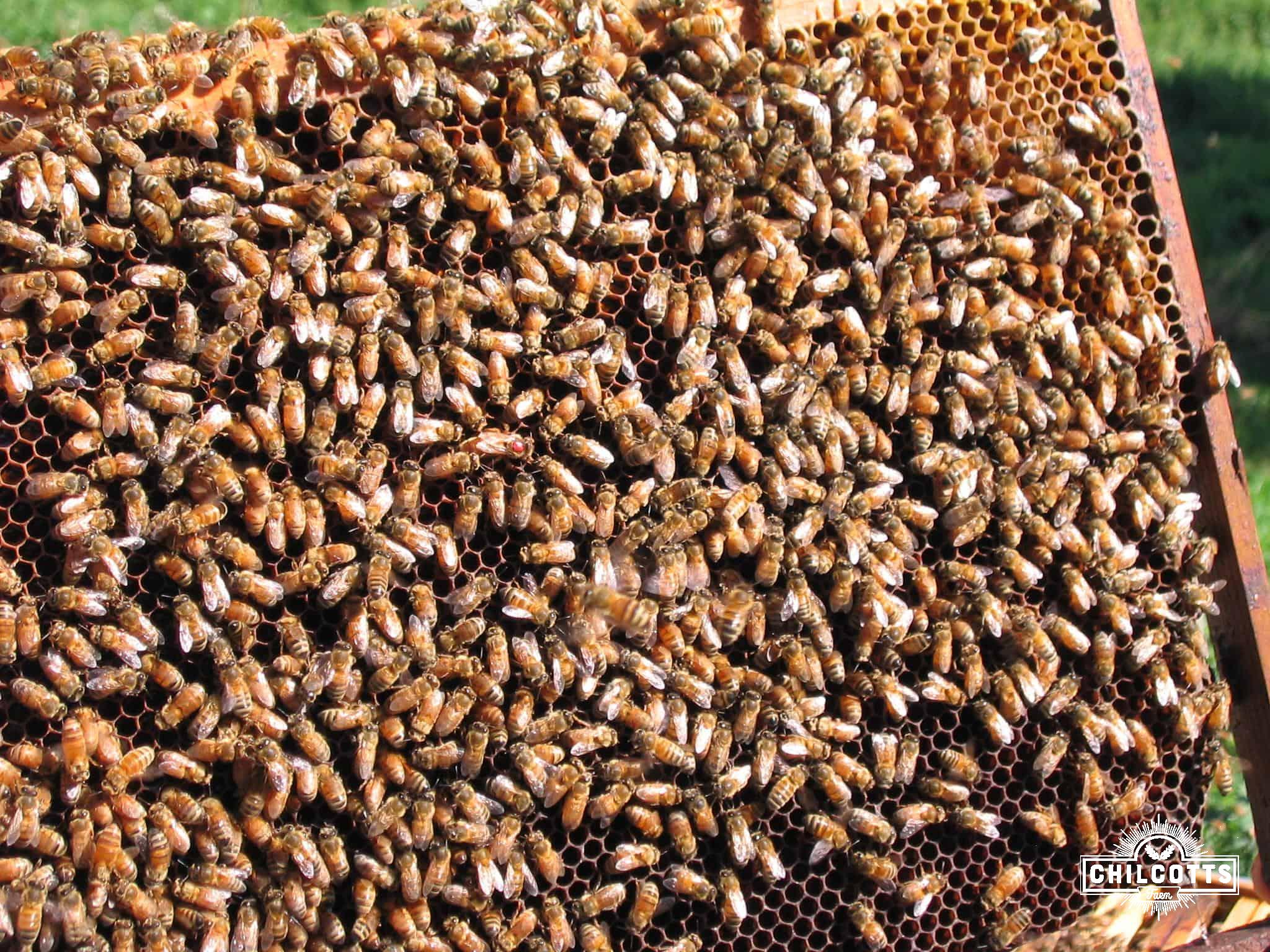

Its August that we harvest the honey from the hive and start to make preparations for Autumn.
The hive population will have reached its maximum and the bees will start to reduce in number as the older bees die. The male bees (drones) will be kicked out the hive and left to die as they are no longer needed.
As the Beekeeper, we need to keep an eye open for robbing wasps and help the bees protect their winter stores by narrowing down the entrance of the hive so they can easily defend it.
The queen may have stopped laying or will be laying very few eggs. The eggs waiting to hatch out are the bees that will over-winter in the hive.
During the summer a bee lives for about 40 days. The bees hatched out from now on, will live through the winter until next spring living several months. It's these bees that will look after queen, undertake housekeeping in the hive and keep the hive warm during the winter months.
As we may have harvested honey, we check to see if the bees have sufficient stores to last them through the winter. They need about 20Kg of honey.
From inspecting the hive and weighing each hive with suitcase scales, we get an indication of the available stores. If there is insufficient stores we feed the bees a thick sugar syrup.
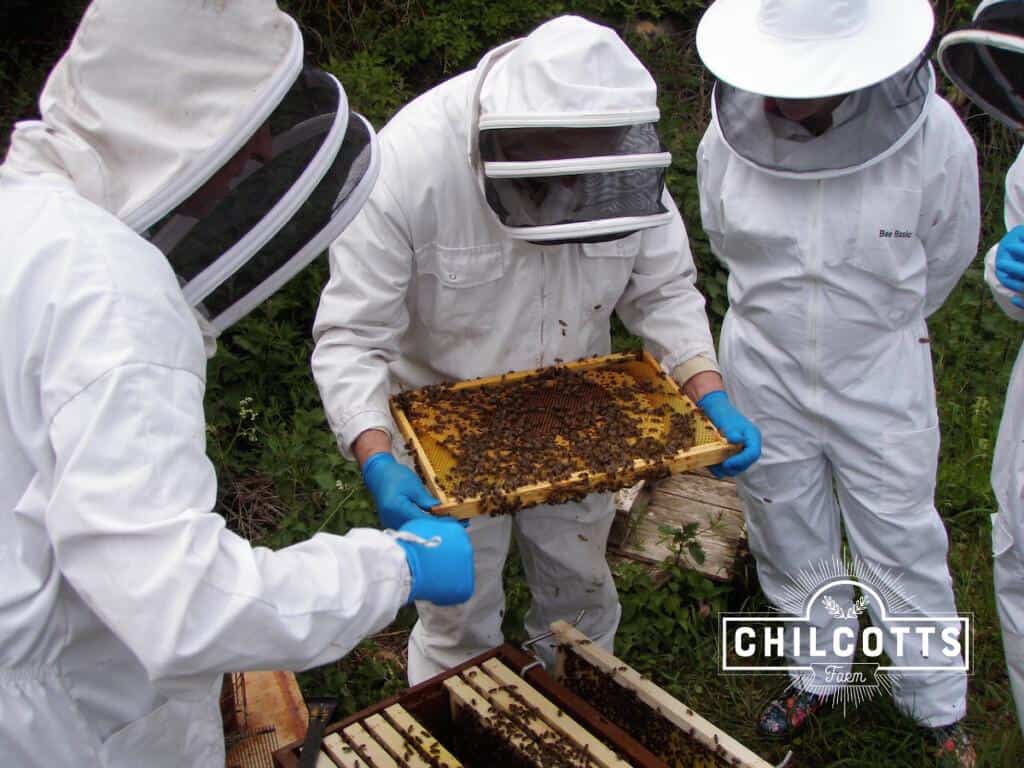
The bees will be doing their final preparations for winter.
The bees will not spend much of their time outside the hive. Instead they will be working in the hive storing and processing any feed that we have given them.
Ivy typically flowers from September to November and is a good source of food. On warm days, the bees may still be coming back to the hive with ivy nectar and adding it to their winter stores.
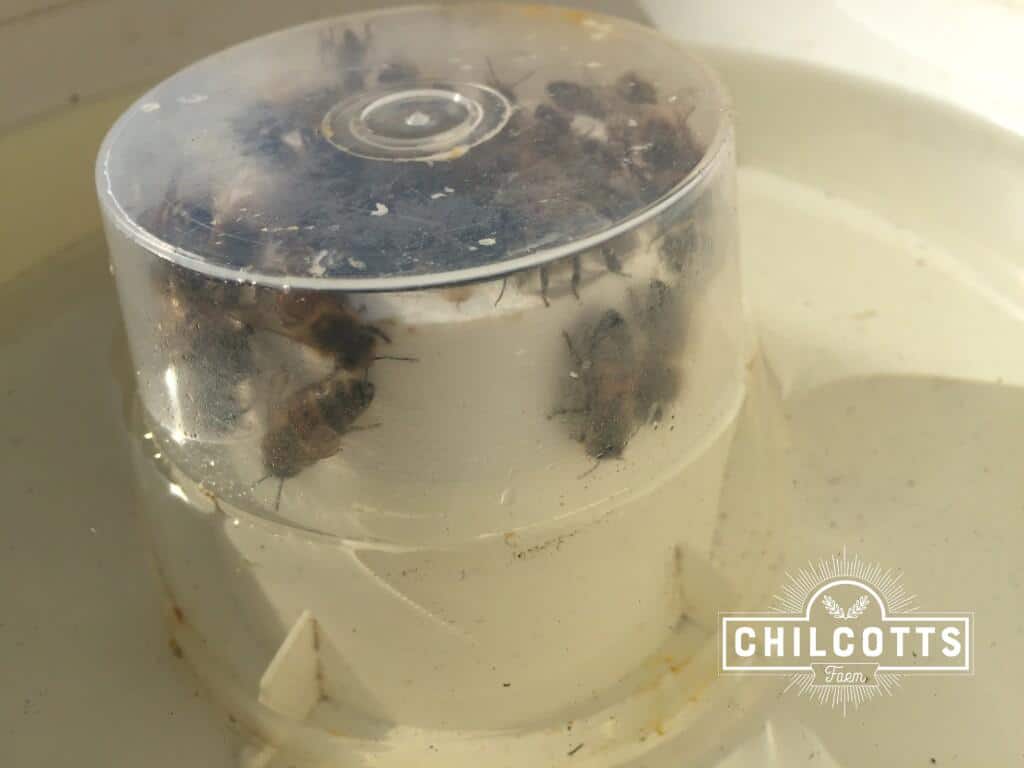
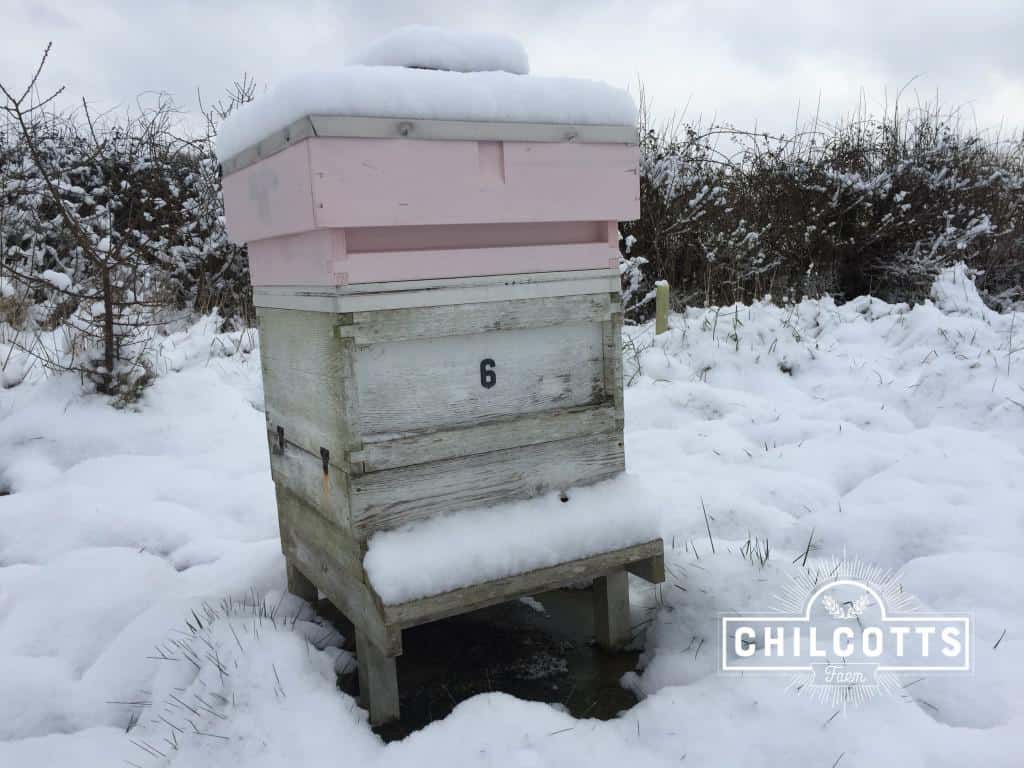
As the weather gets colder, the bees will form a cluster in the middle of the hive surrounding the queen.
In order to keep warm and the hive at a constant temperature, the bees vibrate their wings and bodies. Like shivering this keeps the bees warm.
For food, they consume their stores (honey) for fuel.
BUY HONEY
Local Bickington & Fremington Honey
£6.00
Due to the loss of our bees we will not be selling honey for the foreseeable future.
Produced by our bees in Bickington and harvested using craft skills and traditional methods. Our Honey is unadulterated, filtered and not heat treated, and therefore retains all its natural properties.
CLICK & COLLECT only. Buy online and schedule a time to pick-up.
Card payments only online. ![]() Find us here …….
Find us here …….
Out of stock
Description
Flavour
Our bees are located in our fields between Bickington and Fremington, just on the outside of Barnstaple, North Devon. They forage for nectar in the hedges lining the fields, local trees as well as local gardens. In our opinion, the honey shows the characteristics of a traditional English honey, smooth but floral with hints of fudge and citrus.
Granulated Honey
All natural and unprocessed honey will crystallise over time. Depending on which flowers the bees have been visiting will depend on how quickly the honey granulates or goes solid. Processed liquid honey bought in the super market, is treated to stop granulation. This is often done through heating the honey. This process destroys the natural properties of the honey removing the benefits and altering the taste.
At Chilcotts Farm our honey is Pure and Untreated. All we do is filter our honey after it has been extracted.
The fact that honey crystallises and granulates, is the best evidence that you have a quality pure product. However, if you prefer liquid honey you can restore it to a liquid state by gently heating the honey. To do this:
- Loosen the lid of the jar, and stand the honey jar in a bowl of hot water.
- Gently stir the honey until the honey becomes liquid again.
Find out More About Our Honey
If you want to know more about our Honey click here.
Newsletter
Additional information
| Availability | Normally available in August or September |
|---|---|
| Allergy Advice | May help pollen allergies |
| Origin | Produced in Devon, United Kingdom |
| Ingredients | Pure Filtered Unadluterated Honey |

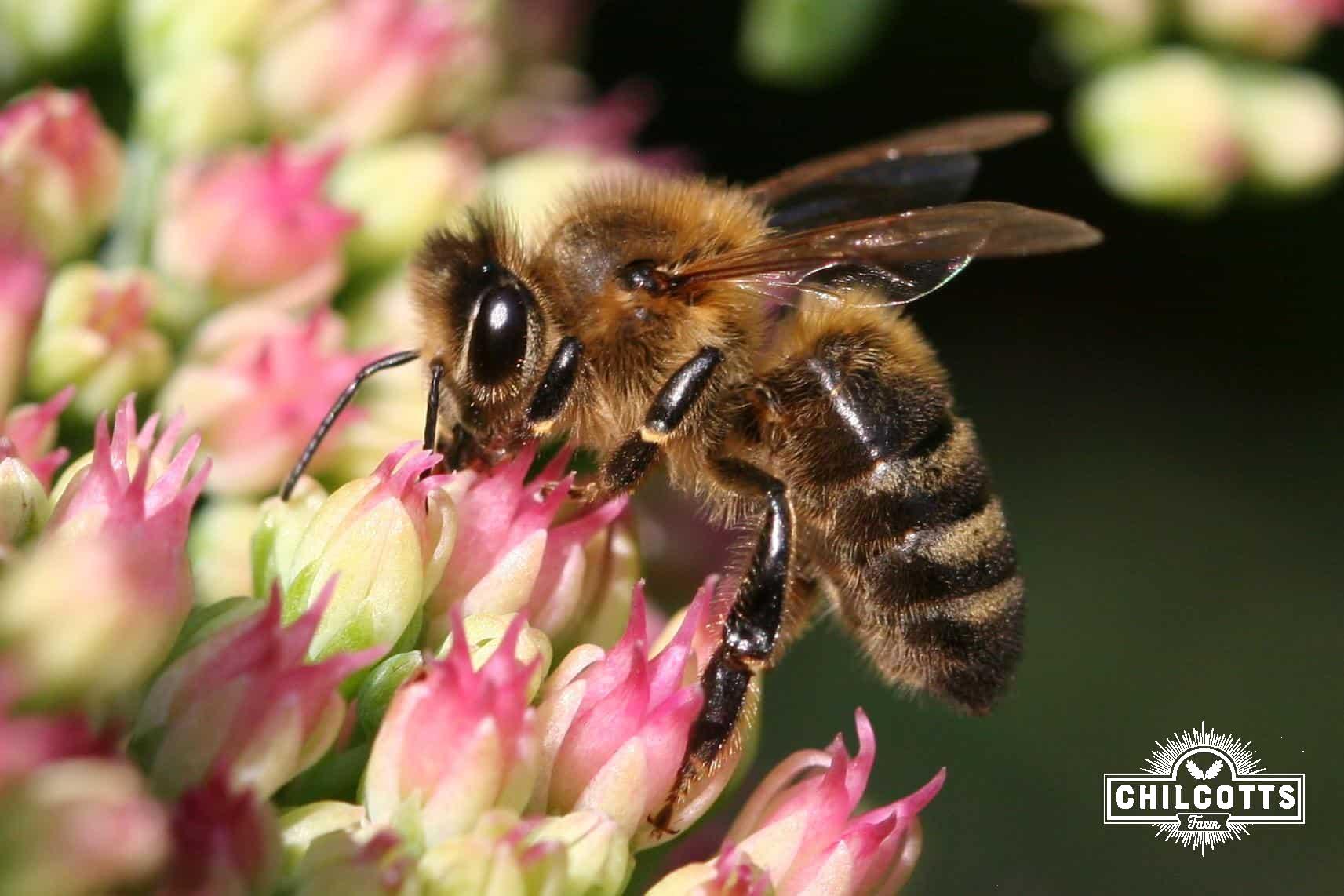
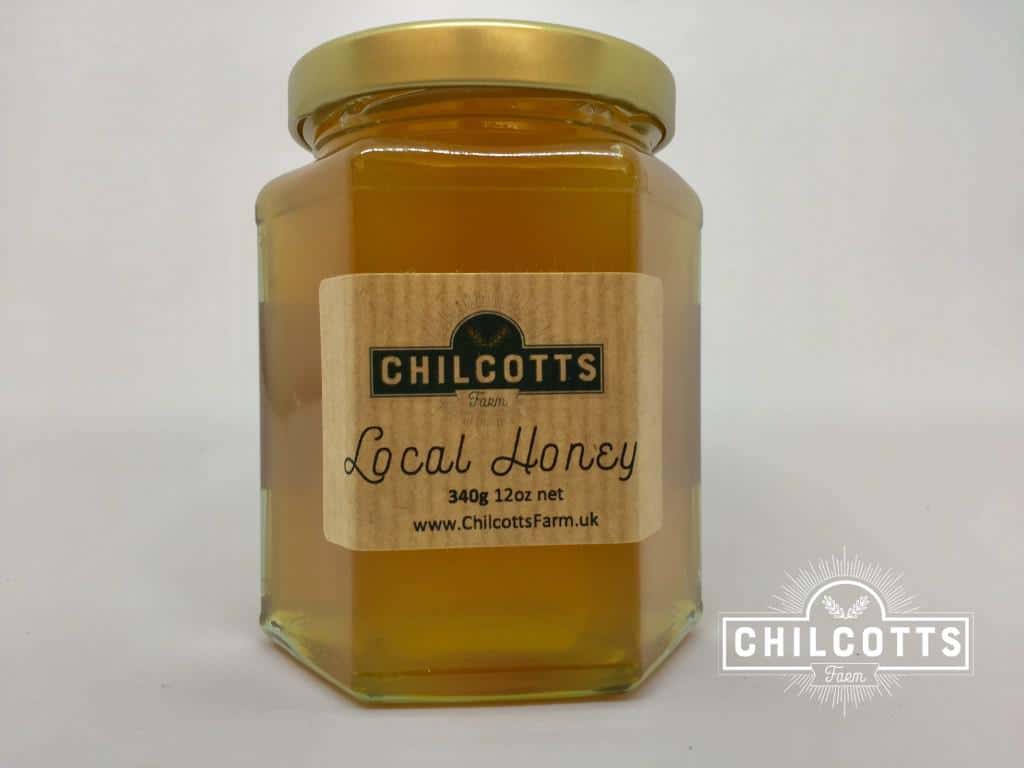
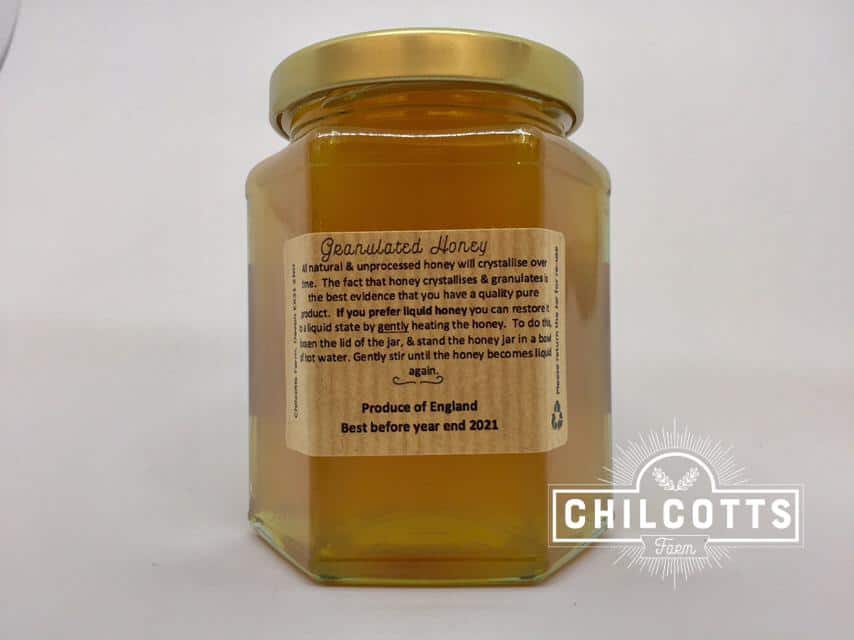
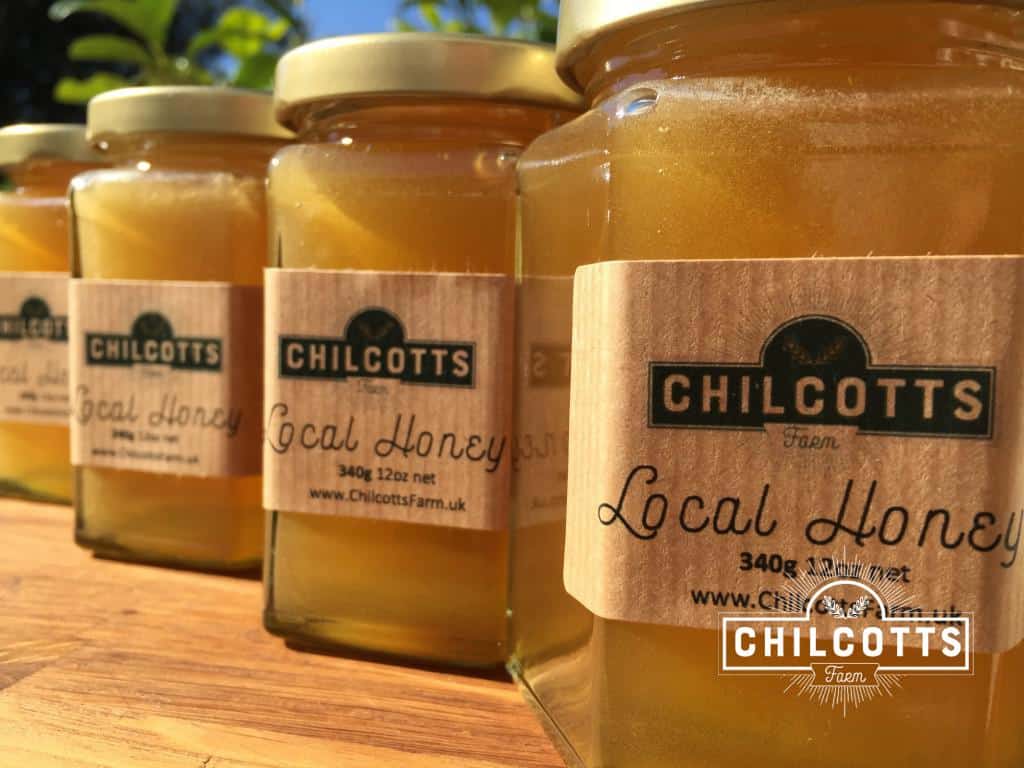
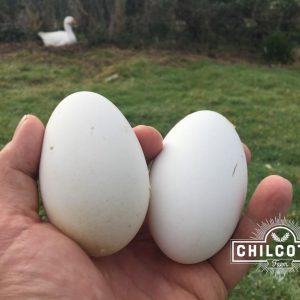
Reviews
There are no reviews yet.